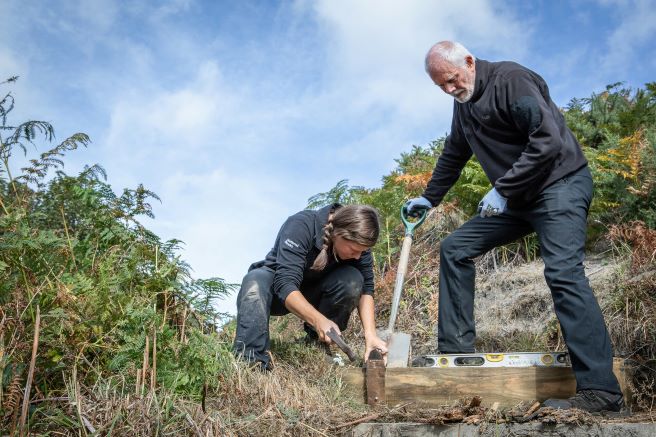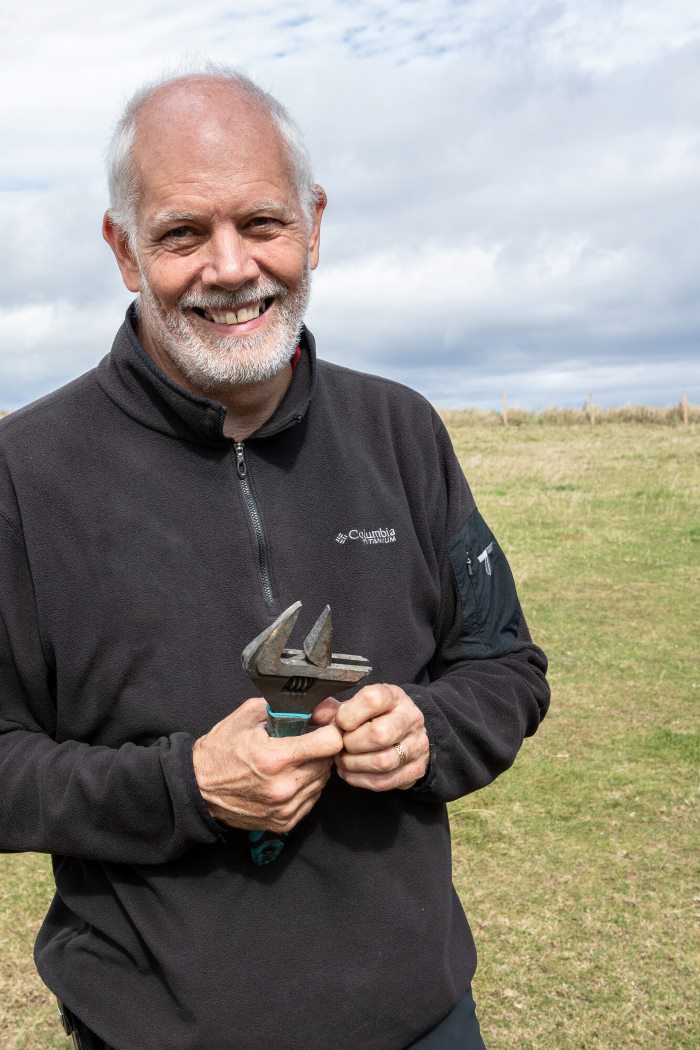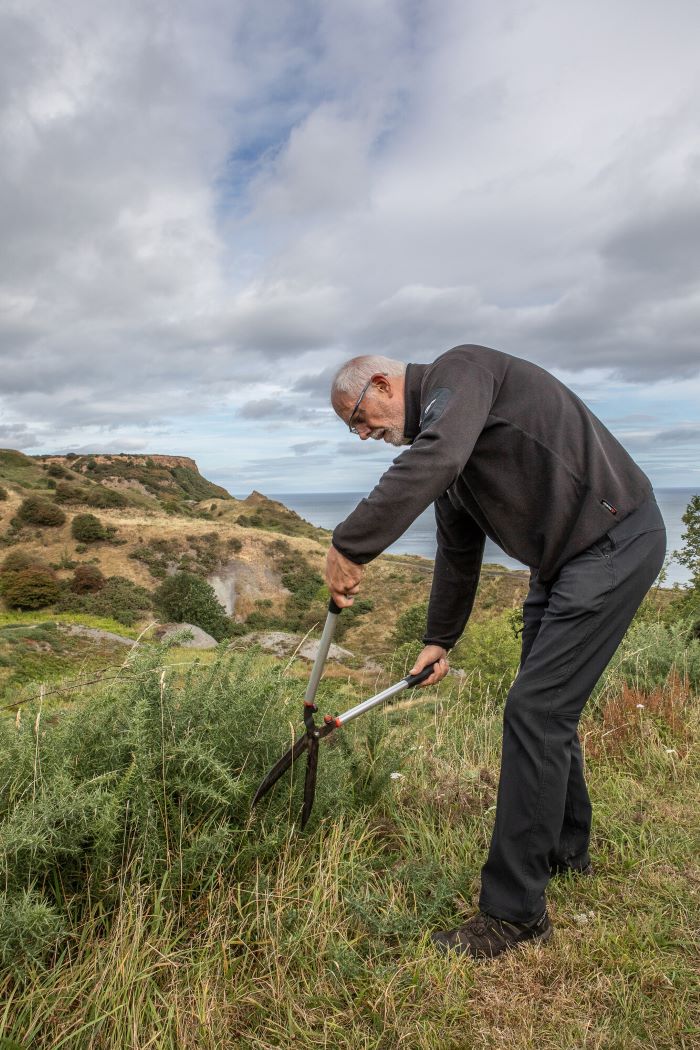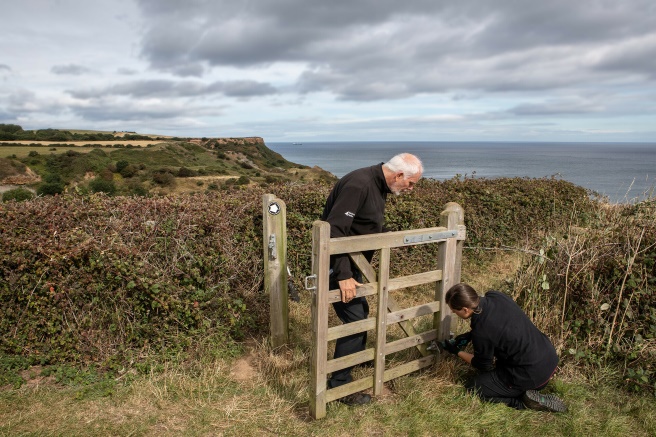Ranger’s infectious enthusiasm helps visitors get the most from the coast
Within minutes of speaking to Bernie McLinden*, you find yourself wishing his massive knowledge of the coast was available as an internet search engine for planning your own trip.

He is ‘The Knowledge’ when it comes to knowing virtually every contour, every stretch of woodland, or every wildlife habitat within what was his patch, which stretched between Boulby near Staithes and Cloughton near Scarborough.
Pose a question such as where to find the best spots near the coast for wildflowers and the Ask Bernie search would immediately reel off several options. But perhaps unlike search engine results, Bernie’s answers, courtesy of his passion for the area and years spent walking every inch of the public rights of way, bring so much life to a place name on a map that you immediately trust his suggestions and want to down tools and go there.
When he describes how Roxby woods near Staithes are filled with wildflowers in spring, you can almost sense their heady fragrance drifting in the air as if you were standing there in a sunlit glade. Or his suggestion for August where there’s a spot just inland that can beat the more obvious point at Ravenscar for exhilarating cliff top views – a place where you can look across at a sea of purple heather just as your gaze meets the actual sea.
It’s lucky then that Bernie has a team of voluntary rangers who share his passion and can provide insider tips and advice as they meet visitors while out monitoring and maintaining the miles of public rights of way.
Bernie, how long were you a Senior Ranger and what is it about working along this stretch of coastline that motivated you?
I have worked at the National Park for almost 24 years, working in different areas during that time. The coastal part of the National Park has always been a favourite and it was such a privilege to have it as my area of work. You can’t get away from the beauty of coast and its views and vistas. Every time I drop down Sledgates near Robin Hood’s Bay, I am taken aback as you go over the brow of the hill and the seascape opens up in front of you. Coastal villages huddled and clinging onto the cliffside, wooded valleys that roll down to the sea, the changing weather, fantastic coastal paths to explore - I could go on and on. The landscape motivates me as do the many people I work with, including volunteers, local residents and visitors. Their enthusiasm is my enthusiasm and hopefully mine theirs.
With any beautiful area that teems with wildlife, it must be difficult balancing the need to protect the environment while enabling people to get the most out of seeing some amazing sights. How is that balance struck?
That balance comes from providing visitors with information so they realise the impact they might have, if say, they wander too close to sensitive wildlife habitats.
The last thing we want to do is stop people enjoying themselves but everybody has a duty of care when they’re out in the countryside and our role is to help inform people so they can take that on-board. There’s another aspect too which is the information and advice we provide can actually make somebody’s visit more rewarding and enjoyable.
For instance we give advice on the nature of the terrain and paths or routes that visitors are planning to follow so they’re fully aware of what to expect. If they’re not quite as prepared as they might be, we suggest other more suitable routes and locations where they can still get the most out of their visit. The Countryside Code isn’t always at the forefront of people’s minds when they’re visiting so it’s useful to remind them.


Who’s the ‘we’ you’re referring to?
Well alongside maintenance rangers and apprentice, we have a brigade of voluntary rangers and other volunteers who help patrol the coastal area and carry out practical tasks.
Everybody has a duty of care when they’re out in the countryside and our role is to help inform people so they can take that on-board
Our volunteers are crucial to helping us maintain the rights of way network as well as acting as the public face when they’re out and about. The popularity of some routes, particularly the Cleveland Way National Trail, which hugs the coastline pretty much for half of its 109-mile distance, means a constant maintenance programme is needed.
Our Voluntary Rangers patrol the Cleveland Way, which we split into 10 sections along the coast, each of the volunteers have agreed to undertake at least 12 duties for us annually and will walk sections of the trail every month to monitor the state of the route, reporting back on any work needed, whether it’s repairing a badly eroded path, improving drainage or dealing with a landslip. Landslip's are a very real and relevant issue particularly after heavy rain.
We’ll then prioritise the work that needs to be done, liaising with the Trails Officer and Maintenance Ranger for the Cleveland Way. Again the volunteers and other voluntary groups such as The Coasties are essential to getting the practical work completed.
We share The Coasties with the National Trust and so a significant chunk of our time is also spent collaborating with other bodies, as well as individual landowners in the case of a fence needing to be moved back from a cliff edge after there’s been a landslip.
What’s the single piece of advice you can give to visitors to ensure they get the maximum out of their visit here?
Plan your day out before you get here, whether it’s looking on the National Park’s website or getting hold of a map to work out a route.
From a safety point of view, even though maps on phones are great, they should be used more as a supplementary aid to a physical map as batteries can die or a phone signal might come and go. Maps can also be fascinating as you’ll discover other points of interest once you start studying them.
In recent years, and especially in between pandemic lockdowns, we’ve noticed greater numbers of younger people visiting the coast. They’re genuinely interested in knowing more about what they’re seeing, which is fantastic and we’re only too willing to share our knowledge so they get the most out of their visit.

Bernie’s recommendations for the best spots to visit:
- On a fine day in August walk inland from Ravenscar to Brow Moor and you’ll have fantastic sweeping views along the coastline just as the swathes of purple heather contrast with the blue of the sea.
- Hayburn Wyke – from the Cleveland Way follow a path through ancient woodland to a waterfall that descends straight onto a pebble beach.
- In spring, it’s worth venturing slightly inland following quiet footpaths by the becks that flow towards Staithes to discover beautiful woodland where flowers such as wild garlic, wood anemones and dog’s mercury grow profusely.
* Bernie is now the Project Officer for the stretch of Coast to Coast that runs across the North York Moors, as this much-loved route is upgraded to become a National Trail. Working alongside landowners, improvements are already underway, with the opening planned for late 2025. This will see the trail made more accessible and ensure it is maintained to National Trail standards.
